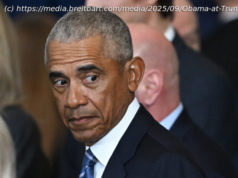A limit on the number of uranium-enriching centrifuges is at the heart of a hard-won 2015 deal between Tehran and world powers aimed at controlling Iran’s nuclear ambitions.
A limit on the number of uranium-enriching centrifuges is at the heart of a hard-won 2015 deal between Tehran and world powers aimed at controlling Iran’s nuclear ambitions.
Under the accord, Iran agreed to greatly reduce its nuclear programme in return for the lifting of punishing international sanctions.
Signed by Iran and Britain, China, France, Germany, Russia and the United States, it ended a 12-year standoff over concerns that Tehran was developing a nuclear bomb.
But the US withdrew from the deal in May, and Iran said Tuesday it is launching a plan to boost uranium enrichment with new centrifuges.
Here is some background:
– What is a centrifuge? –
Centrifuges are used for spinning uranium gas at supersonic speeds to make it suitable for power generation and medical uses but also, at high purities, for a bomb.
– Accord reduced capacity –
Under the 2015 accord, Iran agreed to reduce its nuclear capacity, including centrifuges and stocks of enriched uranium, for several years.
The aim was to make it impossible for Iran to make a nuclear bomb while allowing Tehran, which denies any military goal, a civil nuclear capacity.
Tehran agreed to slash the number of centrifuges by more than two-thirds to 5,060, maintaining this level for 10 years.
Iran also agreed to redesign and rebuild a heavy water research reactor in the industrial city of Arak to ensure it does not produce weapons-grade plutonium, the alternative to uranium for a nuclear weapon.
Iran got rid of 98 percent of its enriched uranium stockpile, and allowed intensive monitoring by the International Atomic Energy Agency (IAEA).
It has the right to enrich uranium to 3.67 percent, well below weapons-grade levels of around 90 percent.
The measures left Iran with a « breakout time » — the time needed to accumulate enough fissile material for an atomic bomb — of one year, up from two to three months.
– Rebuilding capacity? –
On Monday, Iran notified the IAEA that it has launched a plan to increase its uranium enrichment capacity by producing new centrifuges.
Uranium enrichment
AFP, AFP
Vice-President Ali Akbar Salehi, however, said the plan to open a centre for the production of new centrifuges did not mean they would immediately be assembled, and would not constitute a violation of the 2015 agreement.
The accord provides detailed rules on which types of centrifuge, and how many, Iran can build and test. These restrictions start to ease after eight-and-a-half years and disappear completely after 10 years.
However, restrictions on its uranium stockpile and level of enrichment remain in place until 2030.
Surveillance of its centrifuge production sites is due to continue until 2035 and of uranium mills and mines until 2040.





